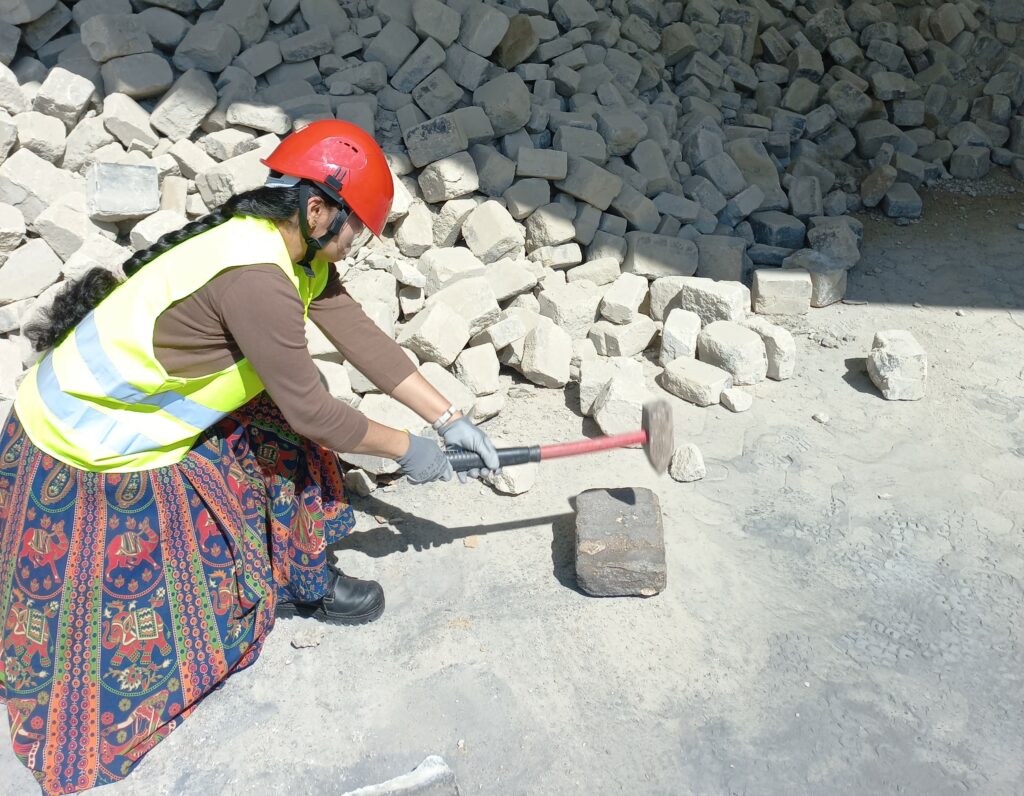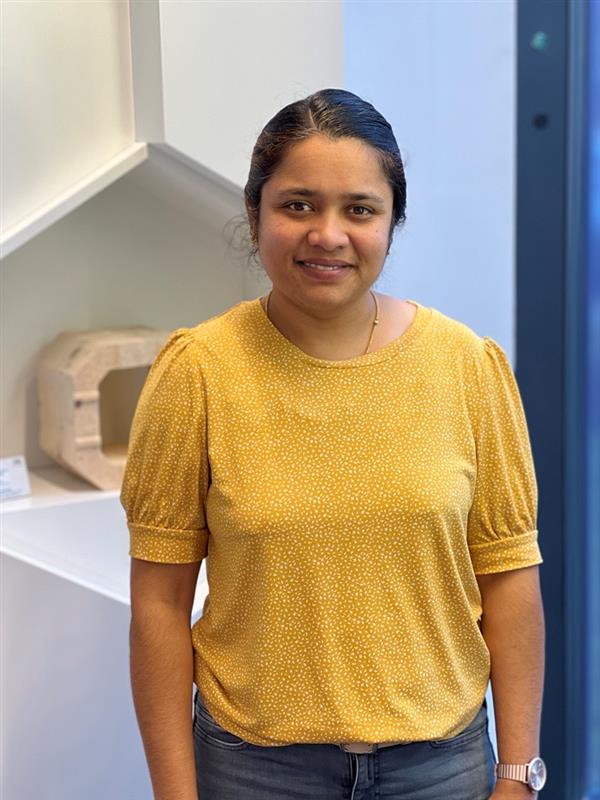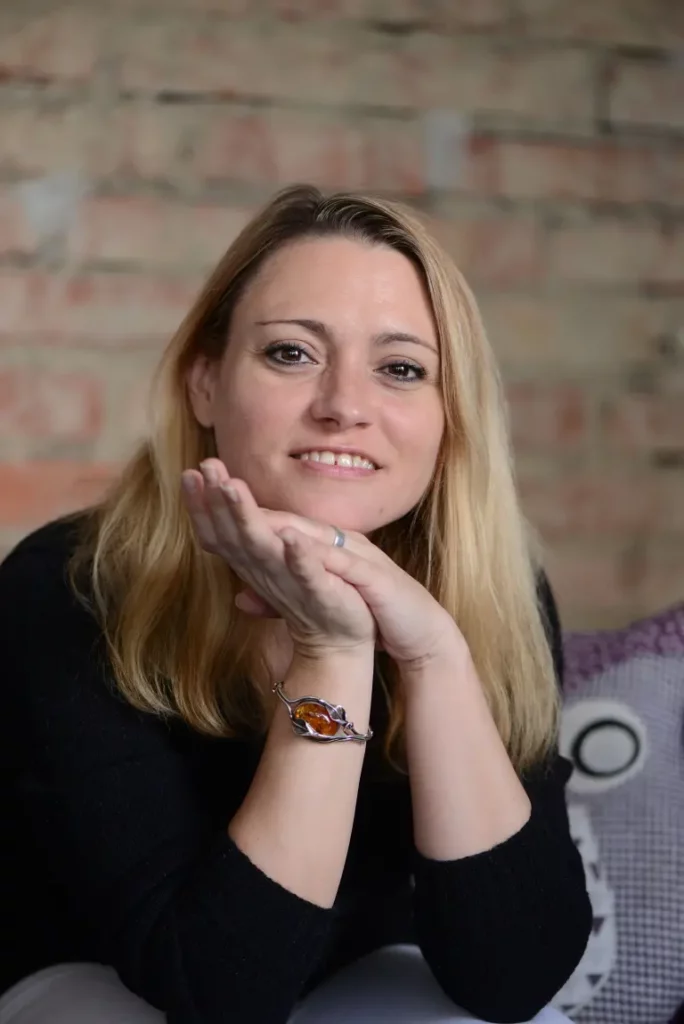The Project ReSoURCE – An interview with Project Coordinator Saranya Azhaarudeen

Usually, what you can expect to find on this blog are surely not a bunch of interviews. Afterall this is a blog and so you will get, what blogs are famous for: the authentic voices of the writers. And since this is a science blog, you will hear our scientists. But to get a proper start I found an interview with our Project Coordinator Saranya Azhaarudeen (SA) most helpful.
Carmen Loew (CL), Science Communicator for Project ReSoURCE
CL: Saranya, you are the project coordinator of our project ReSoURCE. Please, explain to our readers: what is this project about?
SA: The project is about recycling of refractory products – so it is generally about recycling, sustainability and environmental friendliness.
CL: Refractory products are products that are heat resistant and I, too, had to learn that they are needed for almost everything. Yet, before I joined our team, I had never heard of them before. Could you give us some more details what refractory products are needed for, please?
SA: Yes. These kinds of products are highly temperature resistant. They are used in many industries, for example in the steel, glass or cement industry. Without refractory these industries cannot produce their items. Most people are not aware of the importance of refractories, but they are vital for countless products we use in our daily lives.
CL: I learned that the gaining of the raw material for refractory products is causing high CO2 emissions. Is that the reason why RHI Magnesita participates in this project?
SA: Yes, one reason is that we want to reduce the CO2 emissions in many of our processes and particularly recycling is one of the processes that can really help us to reach our goals. To reduce the CO2 emissions is one of the fundamental aims of this project. Furthermore, the quality of recycled products will also significantly improve by this project. There is a general feeling in the industries that recycled products are not the best. People think they are not as good as new products. That is not true and luckily, the opinion is changing now, since the EU is giving funding to research such things. My impression is that people are understanding better and better, why it is important to recycle everything – not only plastic. To recycle everything is so important because it reduces the raw material usage. After all, to gain new raw material is nothing else but exploiting nature. Partly, we will always have to do that, but at least with recycling we get the most out of it.
CL: If we’d recycle more that might also have an impact on international trade, right? I heard that a lot of the raw material is currently coming from Asia, especially China.
SA: Yes, Europe might not get totally independent from what country ever regarding all the different materials that we need, but we will reduce our dependency. Politics aside, after Corona everybody had lot of problems to get raw materials. Through recycling, the material we have already imported will become fruitful for Europe’s local cycles. So here too, our dependency is reducing a bit.
CL: Do you think that this could also be one of the reasons for the EU to fund such projects?
SA: Well, the funding of the EU is mainly on the technologies used, because we are using high advanced technologies to improve the refractory sorting.
CL: What scientific disciplines are involved in this project?
SA: Geology, laser technology, hyper-spectral imaging, artificial intelligence-based programming, waste management, comminution, material science and many more. We need many partners from different research areas. For example, in our project we are using very advanced technology like hyperspectral imaging, to name just one. That’s why we have partners who are specialized in this. They are the ones who will mainly solve the problems with the sorting of the material. Especially for sorting below 5mm particle size the outcome of the project will be very useful. You can see on our website who is involved in the project ReSoURCE and how they contribute.
CL: Yes, and we will also introduce all our partners here in our weblog as well as some of the scientists who are participating. Saranya, can you explain: what exactly is the problem with the sorting of the material that you want to solve with this project?
SA: To recycle the used material, we need to sort it first. Sorting means like you are managing to separate the big material, the small material in regard to the sizes but also to the material itself. You know, the steel industry does not use the same material as the glass industry. The chemical composition is different for the refractory products that are used by the different industries. For example, cement needs a higher temperature than steel, so they need other components in the heat resistant bricks that we provide. Also, they work with different slags and that can be still attached to the bricks when we want to recycle them. So, a chemical analysis has to be performed. Our goal is now to do everything in one set-up: to do the chemical analysis combined with mineralogic data and to sort this out. What we are trying to develop is really a very advanced equipment.
CL: A new machine will be the outcome of this project?
SA: Yes. With this machine we will use many different technologies to automize the sorting process. You know, when the pieces are really, really small then it is much easier to do automatic sorting by using machines instead of manual sorting, but for the mix of different sizes and material our recycling center is dealing with regularly, there is currently no machine on the market that we could purchase. That is why we have to develop it. Once we developed the technology, we will install two sorting machines in our Recycling center in Mitterdorf.
CL: Does that also mean that you will be able to reuse much more material than you can today?
SA: Yes, currently we recycle about 30%. After the ReSoURCE project, we expect it to be up to 75%. That is what we want to achieve. On top of that, we can also save up to 800,000 tons of CO2 emissions in Europe per year. It’s true what Stefan Borgas, our RHI Magnesita CEO, said at our kick-off meeting: we really have the chance to make a difference in the world with this research.
CL: Thank you for your time, Saranya. I am looking forward to hearing more from you about the background of our project next time.

Author’s Portrait
Saranya Azhaarudeen
Dr. Saranya Azhaarudeen studied at the Technical University of Denmark and has a PhD in Surface and Coatings Technology. She is Innovation Management Professional at RHI Magnesita and Coordinator for the project ReSoURCE, which is finanded by the European Union’s Horizon Europe Framework Programme (HORIZON) under the grant agreement Number: 101058310 .
